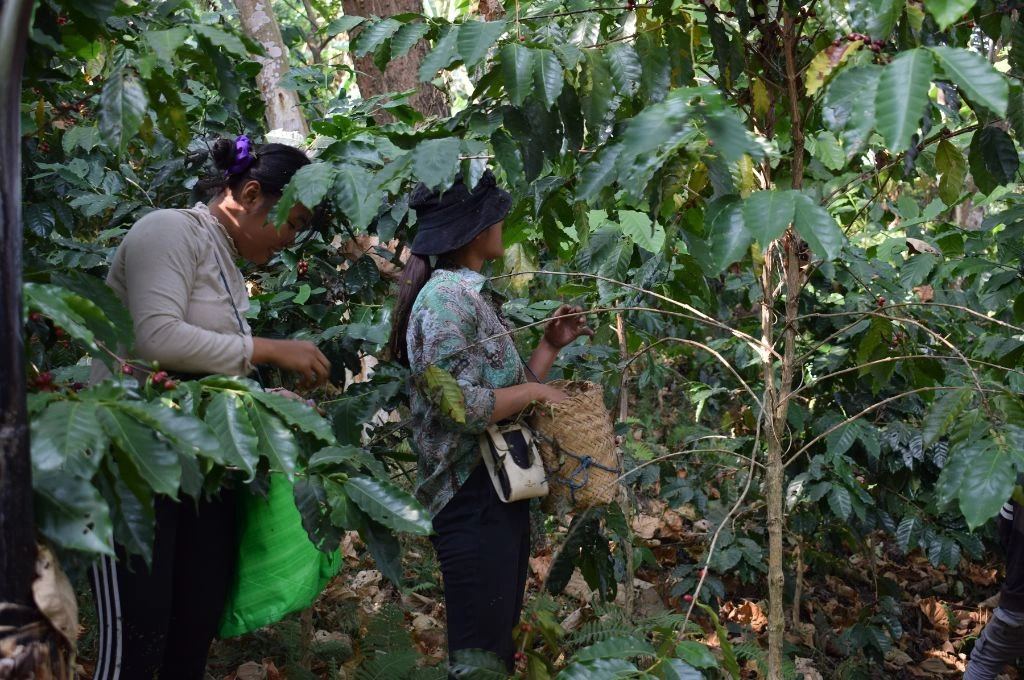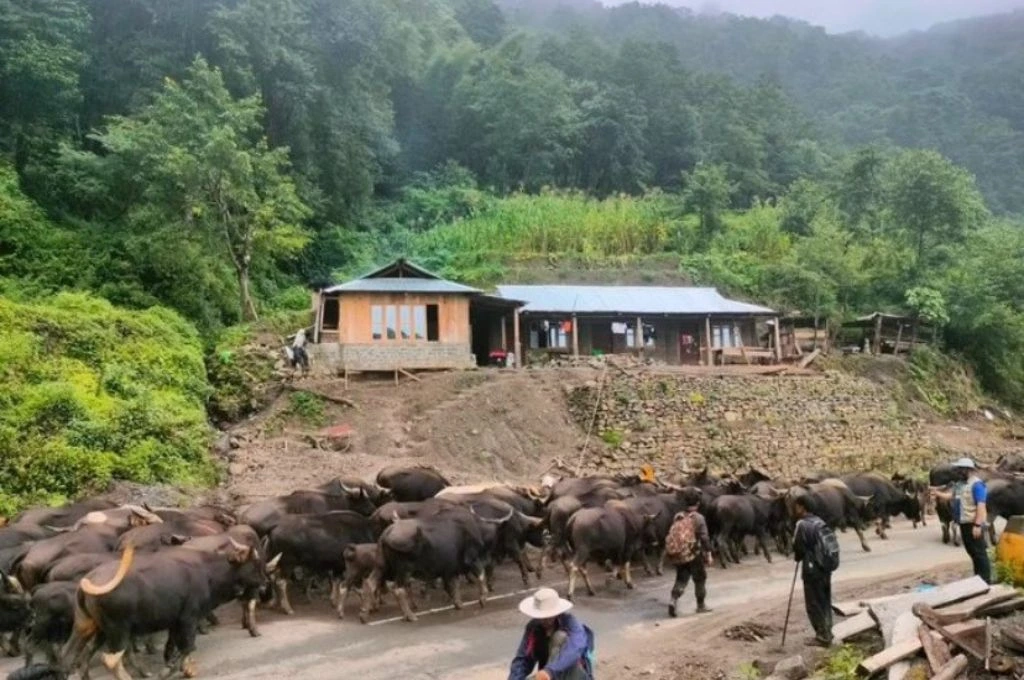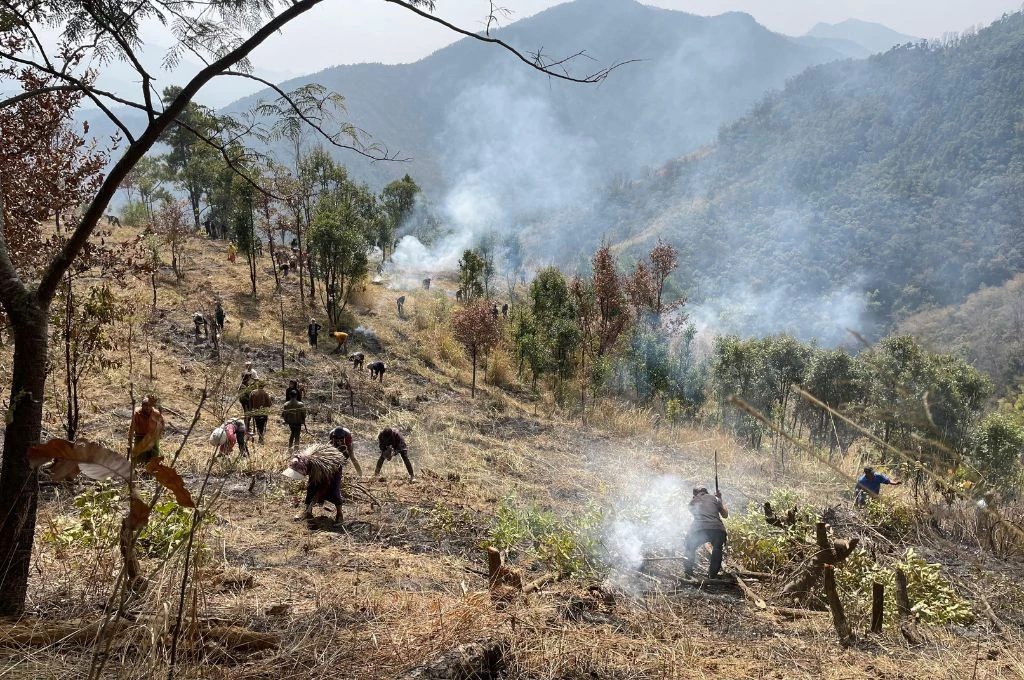In order to preserve Nagaland’s unique cultural, social, and economic characteristics, Article 371A of the Indian Constitution grants special provisions to the state. The act states that the central government won’t interfere in the religious and social practices of the Nagas, their customary laws and procedures, including civil and criminal justice matters, and ownership or transfer of land and resources, unless the state’s legislative assembly passes a resolution to do so.
One significant aspect of this provision is the protection of the traditional landholding system of Nagaland. The state follows a communal land ownership system, where land is owned and managed by tribal communities, clans, and villages, or even privately held by individuals. However, all types of land are governed by village councils and other traditional institutions. This effectively shields the traditional landholding system from central or state interference.
This autonomy in governance also renders local self-governance more powerful in matters of land laws and biodiversity conservation. According to 2021 data, 71 percent of Nagaland lives in rural areas. So, village councils play a crucial role in planning and managing the economic and social development of the land and the flora and fauna.

Comprehending the land system in Nagaland
Neichute Doulo is a social entrepreneur and founder of The Entrepreneurs Associates (tEA), a nonprofit that works on entrepreneurship, including farm-based businesses, in Nagaland. Referring to Nagaland’s unique landholding system, he says, “Many people from outside the state don’t know that we practise village republicanism [where villages function independently] even today. And that is why you have village councils and [its planning arm of] village development boards in Nagaland.”
For generations now, village councils and village development boards have managed biodiversity conservation, driven by people’s deep connection to the land and nature. Villages in close proximity come together and declare parcels of land as community conserved areas (CCAs), which they jointly protect from exploitation and degradation. In the past, villages have banned hunting, prohibited the use of explosives and chemicals for fishing, and stopped bushfires and destruction of forests.
However, factors such as climate change and over-dependence on forests for livelihoods have made it more difficult for the councils to effectively continue conservation efforts. These have accelerated the deterioration of the forests and biodiversity, which is hard to navigate for community-level organisations that are limited by budget and resources.
Nonprofits that work on environmental conservation in the state point out that community control over land is only the first step in the process. Conservation efforts also require money, and the village councils in the current system are left to find the funds needed for environmental work. Further, it doesn’t help that these councils have very little support from the state government.

Beyond the romantic idea of community-led initiatives
Ruchinilo Kemp, co-founder and chief executive of Kenono Foundation, a nonprofit that works on biodiversity conservation in Nagaland, believes that we often romanticise community-led initiatives and assume that they’ll sustain themselves without funding. However, the reality dictates otherwise. While community contributions may suffice for one-time activities, long-term efforts require financial support.

He says, “Since the forests are [mostly] community-owned, [the laws dictate that] they do not receive government funding for conservation efforts. In contrast, government-owned forests, wildlife sanctuaries, and national parks receive significant funding for conservation and management.”
Currently, community conservation in Nagaland is an additional, unpaid work for people.
This means that, currently, community conservation in Nagaland is an additional, unpaid work for people. Ruchinilo shares the example of Sendenyu Community Biodiversity and Wildlife Conservation Board, the village body that manages the CCA in Tseminyu district’s Sendenyu village and that works closely with Kenono. “Our biodiversity guards work for free, but we need to compensate them for their time and effort. They might do it once, but they are juggling this with other commitments such as farming on their land. We must provide honorariums to compensate them for the time spent in conservation efforts.”
Notably, conservation is an arduous task for the nonprofits themselves, because institutional funding is hard to come by. Even beyond personnel costs, initiatives such as awareness camps, knowledge sharing, and engaging activities require funding and are difficult to pay for. The lack of a unified policy at the state level exacerbates this.
Ruchinilo says, “There is no state-level conservation policy in Nagaland, and there’s no centrally allocated budget for the state for maintenance of community land and biodiversity. Many nonprofits in other states apply for grants from the state government under their schemes and policies, but we don’t have that option.”
Neichute emphasises that while the state government has allocated funds to address climate change and forest conservation, these funds are currently channelled through existing government departments only. To achieve meaningful impact, he suggests that the government should explore collaborative opportunities with grassroots actors, which could lead to transformative results.
With minimal external support, conservation organisations and nonprofits in Nagaland have been looking for alternatives.
Nonprofits such as tEA have tried to draw the attention of the central government and funding agencies to the issues that exist in the state, but the efforts haven’t yielded favourable results. In 2008, tEA started developing a community-led mithun conservation project and took the proposal to government institutions and policymakers in Delhi. Mithun is not only culturally significant to Nagaland, but the animal also plays a critical role in the state’s economy and ecology. Neichute says, “The policymakers in Delhi couldn’t understand the need for such a project in Nagaland. They visited the state but ended up donating boots and jackets to the farmers and made a one-time investment of barbed wire fencing. The problem is that we don’t have enough people from Nagaland in policymaking, and people from outside lack an understanding of our state.”
With minimal external support, conservation organisations and nonprofits in Nagaland have been looking for alternatives. They are working on developing innovative solutions such as helping the village communities set up farm-based cooperatives and put aside a portion of the profits for conservation. Some of these efforts have borne fruit.

The relationship between conservation and entrepreneurship
tEA started working on livelihoods and entrepreneurship in 2000, but realised along the way that environmental conservation was a necessity. Neichute says, “The health of our mountain ecosystems is deeply intertwined with the well-being of our communities. The condition of our mountain springs, irrigation systems, and soil health depend on the state of our forests. As deforestation took its toll, we saw the impact on our water sources, irrigation, and soil quality. In response, we sought opportunities to integrate livelihood activities with forest conservation, recognising that the two are inextricably linked.” The organisation focuses on mithun rearing in the community land of some villages in Phek district, done solely by the members of the community to conserve forest reserves and generate income for the mithun farmers.
The nonprofit also runs a plantation programme that aims to plant 3 billion trees by 2050. This programme involves closely associating with village councils and elders to identify lands where plantation drives can be carried out. Alongside trees, protection crops such as ginger, turmeric, perilla, and job’s tears are distributed to the farmers. Protection crops add to the farmers’ income as they wait for the trees to produce fruits, and act as a cushion in the event of natural calamities impacting the trees. In this manner, the farmers are able to generate an income while rewilding their lands. The organisation also buys back the produce from the farmers and creates market linkages.
Along these lines, Kenono Foundation carries out its conservation work in approximately 80 villages and 20 community forest sites (each site covers up to three recognised villages). Ruchinilo observes that villages like Sendenyu have been proactively conserving biodiversity for 20–25 years, but have received very little assistance from the government or nonprofits. To address the issue of funding, the nonprofit supports a coffee farmers’ group in practising environmentally sustainable and profitable farming. Kenono also supports ecotourism in the areas where it works and promotes homestays as a sustainable tourism alternative. Additionally, they have invested in building a biodiversity education centre where community elders share traditional and indigenous knowledge with younger generations through interactive sessions.
Apart from offering financial support, the organisation works closely with the local communities and strengthens the already existing CCAs through capacity building and resource management.

A whole lot of unique challenges
Despite the considerable success of the social entrepreneurship model, there are many problems unique to the region that the nonprofits are struggling to solve.
1. Not all councils are at the same level: While nonprofits have managed to work with the village councils and other local bodies on conservation, their capacities vary and so does their ability to engage. There are some CCAs that are decades old and then there are others that are five years old, so there’s a disparity in understanding and in resources.
2. Biodiversity doesn’t consider village borders: For so long, conservation efforts in the state have been hyperlocal in nature. But there are disadvantages to this as well. Neichute says, “Many village councils have not gone beyond the economic development of their own village.”
It is also difficult for the collaborating villages to reach a consensus. Ruchinilo adds, “It is a Herculean task to make all the villages agree on a common plan. But the issue is that biodiversity doesn’t understand borders.” This means that even if one CCA is doing very well and another one in a neighbouring village isn’t, it affects the environment.
3. Older cooperatives are difficult to convince: The nonprofits that have been working on building sustainable businesses are also working on mindset change. Apart from village councils, both tEA and Kenono make efforts to involve the church, tribal council, associations, district planning and development board, youth organisations, etc. as these are institutions that people have faith in. This approach has worked in many areas. However, the organisations also face roadblocks in the form of older enterprises and cooperatives that predate them, and that don’t see a clear link between biodiversity and business. Since they have been around for long, these enterprises tend to be influential in the villages and thus dictate the mindset of the community members.
4. Conservation societies cannot receive foreign funding: Societies, councils, and student bodies jointly formed by villages to protect CCAs have been effectively doing their work, but they still can’t apply for direct funding from foreign agencies and bigger funding organisations. They often do not have the resources to meet the compliances and lack proper documentation. This means that they are heavily dependent on nonprofit partners for funding and other forms of support.
—
Know more
- Read this interview with a conservation researcher in Nagaland to understand community forest protection.
- Learn how women entrepreneurs in thrift business in Nagaland are adapting to the changing times.
- Learn more about article 371 and its history.
This article was updated on February 6, 2025 to correct the spelling of Neichute Doulo’s name.




